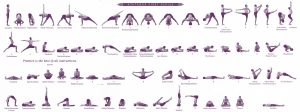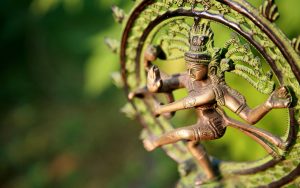WHAT IS YOGA
No style is better than another; it’s simply a matter of personal preference.
More important than any style is the student-teacher relationship.
Ananda
Ananda Yoga is a classical style of hatha yoga that uses asana and pranayama to awaken, experience, and begin to control the subtle energies within oneself, especially the energies of the chakras. Its object is to use those energies to harmonize body, mind, and emotions, and above all to attune oneself with higher levels of awareness. Ananda Yoga for Higher Awareness is a system of Hatha Yoga established by Kriyananda, a disciple of Paramahansa Yogananda, and is based on Yogananda’s Self-Realization Fellowship (SRF) and Yogoda Satsanga Society of India (YSS) teachings.
Anusara
Anusara (a-nu-SAR-a) means, “to step into the current of Divine Will”, “following your heart”, “flowing with Grace”, “to move with the current of the divine will.” A new style developed by John Friend, Anusara yoga is described as heart-oriented, spiritually inspiring, yet grounded in a deep knowledge of outer and inner body alignment. Each student’s various abilities and limitations are deeply respected and honored. is a modern-day Hatha yoga system founded by John Friend? Anusara means “flowing with grace,” “going with the flow,” “following your heart.” Anusara Yoga is rooted in a non-dual Tantric philosophy that we are all inherently good.
Ashtanga
Vinyasa Yoga is a style of modern yoga created by K. Pattabhi Jois during the 20th century, often promoted as a modern-day form of classical Indian yoga. The Sanskrit word “Ashtanga” or “eight limbs” is representative of the eight-fold path of yoga outlined in the Yoga Sutras of Patanjali. For those who want a serious workout, Ashtanga may be the perfect yoga. Developed by K. Pattabhi Jois, Ashtanga is physically demanding. Participants move through a series of flows, jumping from one posture to another to build strength, flexibility, and stamina. It’s not for beginners or anyone who’s been taking a leisurely approach to fitness. The so-called power Yoga is based on Ashtanga.
Bhakti Yoga
Bhakti Yoga, also called Bhakti marga, is a spiritual path or spiritual practice within Hinduism focused on loving devotion towards a personal god. It is one of the paths in the spiritual practices of Hindus, others being Jnana yoga and Karma yoga. The tradition has ancient roots. A person who practices bhakti yoga, known as a bhakti yogi, thinks of God in personal terms, such as Father, Mother, Friend, or Beloved. This helps the bhakti yogi to awaken love for God. When done correctly, this eventually leads one to see and love God in all forms, rather than just in one’s chosen deity. The path of bhakti yoga teaches that it is our manner of love, and it’s a strength, rather than the particular form that is loved, that determines it’s a success.
Bikram
Bikram Choudhury’s yoga is hot, so be prepared to sweat, sweat, sweat. In class, they crank the thermostat up high, then perform a series of 26 asanas designed to “scientifically” warm and stretch muscles, ligaments, and tendons. Founder Bikram Choudhury studied yoga with Bishnu Ghosh, brother of Paramahansa Yogananda.
Integral
Developed by Swami Satchidananda, the man who taught the crowds at the original Woodstock to chant “Om,” Integral classes put almost as much emphasis on pranayama and meditation as they do on postures. Integral yoga is used by Dr. Dean Ornish in his groundbreaking work on reversing heart disease. also called supramental yoga, is the yoga-based philosophy and practice of Sri Aurobindo and The Mother (Mirra Alfassa). As a yoga idea, Spirit manifests itself in a process of involution. The reverse process of evolution is driven toward a complete manifestation of spirit.
Hatha Yoga
Hatha is also translated as ha meaning “sun” and the meaning “moon.” This refers to the balance of masculine aspects—active, hot, sun—and feminine aspects—receptive, cool, moon—within all of us. Hatha yoga is a path toward creating balance and uniting opposites. In our physical bodies, we develop a balance of strength and flexibility. We also learn to balance our effort and surrender in each pose. Hatha yoga is a powerful tool for self-transformation. It asks us to bring our attention to our breath, which helps us to still the fluctuations of the mind and be more present in the unfolding of each moment. Most forms of yoga in the West can be classified as Hatha Yoga. Hatha simply refers to the practice of physical yoga postures, meaning your Ashtanga, vinyasa, Iyengar, and Power Yoga classes are all Hatha Yoga. The word “hatha” can be translated two ways: as “willful” or “forceful,” or the yoga of activity, and as “sun” (ha) and “moon” (tha), the yoga of balance. Hatha practices are designed to align and calm your body, mind, and spirit in preparation for meditation.
Iyengar
Best described in his bestselling 1966 book Light on Yoga, is a form of Hatha yoga that has an emphasis on detail, precision, and alignment in the performance of posture (asana) and breath control (pranayama). Strength, mobility and stability are gained through the asanas. Ever think standing was just a matter of keeping your body on top of your legs? It’s hard to appreciate how involved a simple thing like just standing can be, how much concentration and how many subtle movements and adjustments it takes, until you take an Iyengar yoga class. Of course, the point is that you’re not just standing. You’re doing Tadasana, Mountain pose, and in yoga in the style of B.K.S. Iyengar, Tadasana is an active pose. B.K.S. Iyengar is one of the best-known yoga teachers and the creator of one of the most popular styles of yoga in the world.
Kali Ray TriYoga
Kali Ray TriYoga, founded by Kali Ray, brings posture, breath and focus together to create dynamic and intuitive flows. The Tri Yoga flows combine flowing and sustained postures that emphasize spinal wavelike movements, the economy of motion, and synchronization with breath and mudra. Prāṇāyāma balances strengthen and increase life energy. The result is a peaceful mind, the foundation for expanded awareness. Prana is a Sanskrit word derived from two roots; pra represents “continuous” and a means “movement.”
Kripalu
Called the yoga of consciousness, Kripalu puts great emphasis on proper breath, alignment, coordinating breath and movement, and “honoring the wisdom of the body” — you work according to the limits of your individual flexibility and strength. Alignment follows awareness. Students learn to focus on the physical and psychological reactions caused by various postures to develop their awareness of mind, body, emotion, and spirit &is a challenging approach to asana practice that emphasizes meditation and breathwork and encourages inward focus and spiritual attunement. Basic Principle: Practicing Kripalu Yoga can initiate a gradual process of physical healing, psychological growth, and spiritual awakening.
Kundalini
Kundalini yoga in the tradition of Yogi Bhajan, who brought the style to the West in 1969, focuses on the controlled release of Kundalini energy. The practice involves classic poses, breath, coordination of breath and movement, meditation. An uplifting blend of spiritual and physical practices, Kundalini Yoga incorporates movement, dynamic breathing techniques, meditation, and the chanting of mantras, such as Sat Nam, meaning “truth is my identity.” The goal is to build physical vitality and increase consciousness.
Raja Yoga
Raja Yoga is viewed as the “royal path” to attaining the state of yoga or unity with mind-body-spirit. Raja Yoga is so highly revered because it attain thank you very much for your simple and clear definition and stages of raja yoga. It is also sometimes referred to as Aṣṭānga (eight-limbed) yoga because there are eight integral practices on its yogic path. Raja yoga is concerned principally with the cultivation of the mind using meditation (dhyana) to control and subdue mental fluctuations in order to still the mind and achieve liberation. report this ad Rāja Yoga seeks to discipline and calm one’s body and thoughts so that one true spiritual nature will shine forth. By learning to control the universe of one’s own mind, it is said that a yogi (practitioner of yoga) can attain spiritual liberation (enlightenment).
Etymology: The term Raja Yoga derives from two Sanskrit words “Raja” (“King”) and “Yoga” (from the root Yuj meaning “to control”). Thus, placed together, the term “Raja Yoga” means the “Royal Yoga,” the “King of the Yoga’s,” the “Highest Yoga,” the “Regal way of controlling one’s mind and thoughts.” The word was first used in connection with harnessing animals (controlling them with leashes). Out of this literal practice arose the metaphorical idea of harnessing the thoughts of the mind through mental discipline, which became the practice of yoga.
Sivananda
Sivananda is one of the world’s largest schools of yoga. Developed by Vishnu-devananda and named for his teacher, Sivananda yoga follows a set structure that includes pranayama, classic asanas, and relaxation. Vishnu-devananda wrote one of the contemporary yoga classics, The Complete Illustrated Book of Yoga. First published in 1960, the book is still one of the best introductions to yoga available. is a non-proprietary form of traditional hatha yoga founded by Swami Vishnudevananda based on the teachings of his beloved guru Swami Sivananda. It is based on the principles of the 4 paths and 5 points of yoga. Its emphasis on asanas influenced the development of modern yoga.
Svaroopa Yoga
Developed by Rama Berch, Svaroopa Yoga teaches significantly different ways of doing familiar poses, emphasizing the opening of the spine by beginning at the tailbone and progressing through each spinal area in turn. Every pose integrates the foundational principles of asana, anatomy, and yoga philosophy, and emphasizes the development of transcendent inner experience, which is called svaroopa by Patanjali in the Yoga Sutras. Sweet Meditation in Seated Sukhasana Pose. Svaroopa (pronounced “svah-roo-pah”) is a healing style of yoga that uses a variety of unique poses to create a deep release of tension throughout the body. The experience of a significant reduction of tension, leaves the body feeling flexible, supple, and rejuvenated.
Viniyoga
Viniyoga is not so much a style as it is a methodology for developing practices for individual conditions and purposes.s a comprehensive and authentic transmission of the teachings of yoga including āsana, prāṇāyāma, bandha, sound, chanting, meditation, personal ritual, and study of texts. This is the approach developed by Sri. T. Krishnamacharya, teacher of well-known contemporary masters B.K.S. Iyengar, K. Pattabhi Jois, and Indra Devi, and continued by his son, T.K.V. Desikachar. A key characteristic of the asana practice is the careful integration of the flow of breath with the movement of the spine, with sequencing, adaptations, and intensity-dependent upon the overall context and goals.
Vinyasa
Vinyasa is a style of yoga characterized by stringing postures together so that you move from one to another, seamlessly, using the breath. Commonly referred to as “flow” yoga, it is sometimes confused with “power yoga“. Vinyasa classes offer a variety of postures and no two classes are ever alike. Vinyasa flow yoga is a creative form of yoga. Yoga poses are linked together with the breath in a flowing sequence. The beauty of Vinyasa yoga is the variety. Classes may be sequenced around a peak pose such as a backbend, or they might focus on a particular theme such as the chakras or an aspect of yoga philosophy.

Yoga Pose Name
Translation From English to Sanskrit

Big Toe Pose – Padangusthasana
Boat Pose – Navasana
Bound Angle Pose – Baddha Konasana
Bow Pos e- Dhanurasana
Bridge Pose – Dwi Pada Pitham or Setu Bandha Sarvangasana
Camel Pose -Ustrasana
Cat Pose – Marjaryasana
Chair Pose -Utkatasana
Child’s Pose – Balasana
Cobra Pose – Bhujangasana
Conqueror Breath – Ujjayi Pranayama
Corpse Pose – Savasana
Cow Face Pose -Gomukhasana or Halasana
Cow Pose – Bitilasana
Crab Pose – Catuspadapitham
Crane Pose, Crow Pose – Bakasana
Downward Facing Dog – Adho Mukha Svanasana
Eagle Pose- Garudasana
Easy Pose – Sukasana, Sukhasana
Equal Standing Pose – Samasthiti
Extended Puppy Pose – Uttana Shishosana
Extended Side Angle Pose
Utthita Parsvakonasana
Extended Triangle Pose
Utthita Trikonasana
Fire Log Pose
Agnistambhasana
Firefly Pose
Tittibhasana
Fish Pose
Matsyasana
Four Limbed Staff Pose
Chaturanga Dandasana
Frog Pose
Bhekasana
Garland Pose
Malasana
Gate Pose
Parighasana
Goddess Pose
Supta Baddha Konasana
Half Boat Pose
Ardha Navasana
Half Frog Pose
Ardha Bhekasana
Half Lord of the Fishes Pose
Ardha Matsyendrasana
Half Lotus Pose
Ardha Padmasana
Half Moon Pose
Ardha Chandrasana
Handstand
Adho Mukha Vrksasana
Happy Baby Pose
Ananda Balasana
Headstand Pose, Supported Headstand
Salamba Sirsasana
Hero Pose
Virasana
Heron Pose
Krounchasana
Intense Side Stretch Pose, Pyramid Pose
Parsvottonasana
King Dancer Pose, Lord of the Dance Pose
Natarajasana
King Pigeon Pose
Kapotasana
Knees to chest pose
Apanasana, Supta Balasana
Legs Up the Wall Pose
Viparita Karani
Lion Pose
Simhasana
Lizard Pose
Utthan Pristhasana
Locust Pose
Salambhasana, Shalabasana
Lotus Pose
Padmasana
Low Lunge, Crescent Pose
Anjaneyasana
Marichi’s Pose I
Marichyasana I
Marichi’s Pose II
Marichyasana II
Marichi’s Pose III
Marichyasana III
Marichi’s
Pose III, Seated twist
Parivrtta Marichyasana
Monkey Pose
Hanumanasana
Mountain Pose
Tadasana
Noose Pose
Pasasana
One Legged Pigeon Pose
Eka Pada Kapotasana
One-Legged King Pigeon Pose
Eka Pada Rajakapotasana
One-Legged King Pigeon Pose II
Eka Pada Rajakapotasana II
Peacock Pose
Mayurasana
Raised Hands Pose
Urdhva Hastasana
Reclined Big Toe Pose
Supta Padangusthasana
Reclining Bound Angle Pose
Supta Baddha Konasana
Reverse Warrior Pose
Viparita Virabhadrasana
Revolved Half Moon Pose
Parivrtta Ardha Chandrasana
Revolved Head-to-Knee Pose
Parivrtta Janu Sirsasana
Revolved Side Angle Pose
Parivrtta Parsvakonasana
Revolved Triangle Pose
Parivrtta Trikonasana
Salutation Seal
Anjali Mudra
Scorpion Pose
Vrschikasana
Seated Forward Bend
Paschimottanasana
Shoulderstand
Salamba Sarvangasana
Side angle Pose
Parsvakonasana
Side Crane Pose, Side Crow Pose
Parsva Bakasana
Side Plank Pose
Vasisthasana
Side Reclining Leg Lift
Anantasana
Sideways Facing Forward Bend Pose
Parsva Uttanasana
Simple Twist Pose
Parivrtta Sukhasana
Staff Pose
Dandasana
Standing Big Toe Pose
Utthita Hasta Padangusthasana
Standing Forward Bend
Uttanasana
Standing Half Forward Bend
Ardha Uttanasana
Standing Split Pose
Urdhva Prasarita Eka Padasana
Standing Straddle Forward Bend
Prasarita Padottanasana
Supine Spinal Twist
Supta Matsyendrasana
Supported Shoulderstand
Salamba Sarvangasana
Table to Child Pose
Chakravakasana
Threading the Needle
Sucirandhrasana
Tree Pose
Vrksasana
Triangle Pose
Trikonasana
Upward Abdominal Lock
Uddiyana
Bandha
Upward Bow or Wheel Pose
Urdhva Dhanurasana
Upward Facing Dog Pose
Urdhva Mukha Svanasana
Upward Facing Two-Foot Staff Pose
Dwi Pada Viparita Dandasana
Upward Plank Pose
Purvottanasana
Upward Salute
Urdhva Hastasana
Warrior I Pose
Virabhadrasana I
Warrior II Pose
Virabhadrasana II
Warrior III Pose
Virabhadrasana III
Wide Angle Seated Forward Bend
Upavistha Konasana
Wide-Legged Forward Bend
Prasarita Padottanasana
Yoga Head to Knee Pose
Janu Sirsasana
Yoga Rabbit Pose
Sasangasana
8,908 total views, 193 views today




